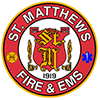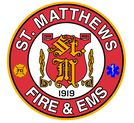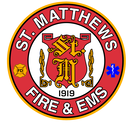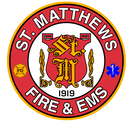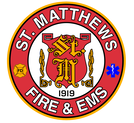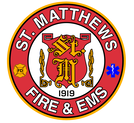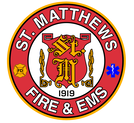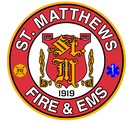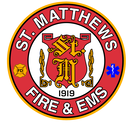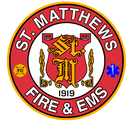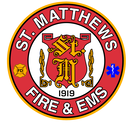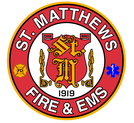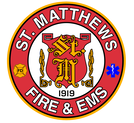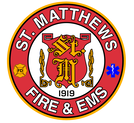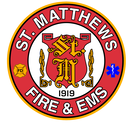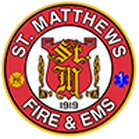Tornadoes
A tornado is a violently rotating column of air extending from the base of a thunderstorm down to the ground. Tornadoes are capable of completely destroying well-made structures, uprooting trees and hurling objects through the air like deadly missiles. Tornadoes can occur at any time of day or night and at any time of the year. Although tornadoes are most common in the Central Plains and southeastern United States, they have been reported in all 50 states.
Lightning & Flood Threats
While much of the focus during severe weather is on tornadoes, wind and hail, there are actually more deaths caused each year by flooding and lightning, which are also commonly associated with severe weather. If you hear thunder or see lightning, immediately seek shelter. Heavy rainfall from thunderstorms can quickly cause rivers and streams to overrun their banks and cause street flooding in cities. Remember, if you encounter a flooded roadway, do NOT drive or walk into it.
Severe Thunderstorms
A thunderstorm is considered severe if it produces hail at least 1 inch in diameter or has wind gusts of at least 58 miles per hour. Every thunderstorm produces lightning, which kills more people some years than tornadoes or hurricanes. Heavy rain from thunderstorms can cause flash flooding. High winds can damage homes and blow down trees and utility poles, causing widespread power outages. Every year people are killed or seriously injured because they didn’t hear or ignored severe thunderstorms warnings.
Carbon Monoxide
Carbon monoxide (CO) is an invisible, odorless gas that can escape from any fuel-burning appliance, such as a gas furnaces, water heaters and stoves, fireplaces, wood stoves, chimneys or space heaters. It can also be created by an automobile idling in a closed or attached garage.
Grilling
In the interest of everyone having a safe and enjoyable outdoor grilling season, we would like to share some information on open flame cooking devices. Grills must be used outdoors. Use of a grill indoors or in any enclosed space, such as tents, garages, etc. poses both a fire hazard and risk of exposure to toxic gases and potential asphyxiation.
Private Dwellings (single family homes, duplexes, townhouses) Charcoal Grills
Only proper charcoal starter fluid should be used – Never use flammable or combustible liquid, other than charcoal starter fluid, to ignite the grill.
Only proper charcoal starter fluid should be used – Never use flammable or combustible liquid, other than charcoal starter fluid, to ignite the grill.
- Store charcoal starter fluid out of reach of children and away from heat sources.
- Never add charcoal starter fluid when coals or kindling have been ignited.
- Charcoal ash can remain hot for several days, and can start a fire long after the grill has been used. Use caution when disposing of ashes and never store ashes in a plastic or other combustible container.
Private Dwellings (single family homes, duplexes, townhouses) Gas Grills
Check for gas leaks before using the grill for the first time each year.
Soapy bubble test
1. Turn on the gas supply (not the grill).
2. Apply a light soap and water solution to the hose and couplings (a spray bottle works well).
Bubbles reveal escaping gas. If you determine your grill has a gas leak, by smell or the soapy bubble test:
a. Turn off the gas supply
b. If the leak stops, have the grill serviced by a qualified professional before use.
c. If the leak does not stop, call the Fire Department – 911
Check for gas leaks before using the grill for the first time each year.
Soapy bubble test
1. Turn on the gas supply (not the grill).
2. Apply a light soap and water solution to the hose and couplings (a spray bottle works well).
Bubbles reveal escaping gas. If you determine your grill has a gas leak, by smell or the soapy bubble test:
a. Turn off the gas supply
b. If the leak stops, have the grill serviced by a qualified professional before use.
c. If the leak does not stop, call the Fire Department – 911
- If you smell gas while cooking, immediately turn off the gas supply, get away from the grill and call the fire department. Do not attempt to move the grill.
- All gas cylinders manufactured after April 2002 must have overfill protection devices (OPDs). OPDs shut off the flow of gas before capacity is reached, limiting the potential for release of propane gas if the cylinder heats up. You can easily identify OPDs by their triangular-shaped hand wheel.
- Use only equipment bearing the mark of an independent testing laboratory and properly listed for the application (commercial, residential, etc.) Follow the manufacturer’s instructions on assembly, installation, use and maintenance.
- Never store propane gas cylinders in buildings or garages. If you store a gas grill inside during the winter, disconnect the cylinder and leave it outside.
- Natural gas installations require permits and inspections by the building department, Inspections Services Division.
Multi-Family Dwellings (garden apartments/condos, high-rises)
If you live in a high-rise or multi-family dwelling, remember that use or storage of open flame cooking devices is prohibited by Fire Code. Additionally, the use or storage of propane (LP gas) is prohibited in or on any building. Prohibited grill-types also includes:
If you live in a high-rise or multi-family dwelling, remember that use or storage of open flame cooking devices is prohibited by Fire Code. Additionally, the use or storage of propane (LP gas) is prohibited in or on any building. Prohibited grill-types also includes:
- Charcoal grills
- Propane grills
- Solid fuel grills
- Brazier or hibachi
- Liquefied petroleum gas-fired stove
- Smokers (solid, fueled, electric, gas)
- Flame-producing devices and/or open flames
- Electric cookers
- Electric grills
Questions About Open Burning?
Visit the Air Pollution Control Board of Louisville to learn the rules.
|
